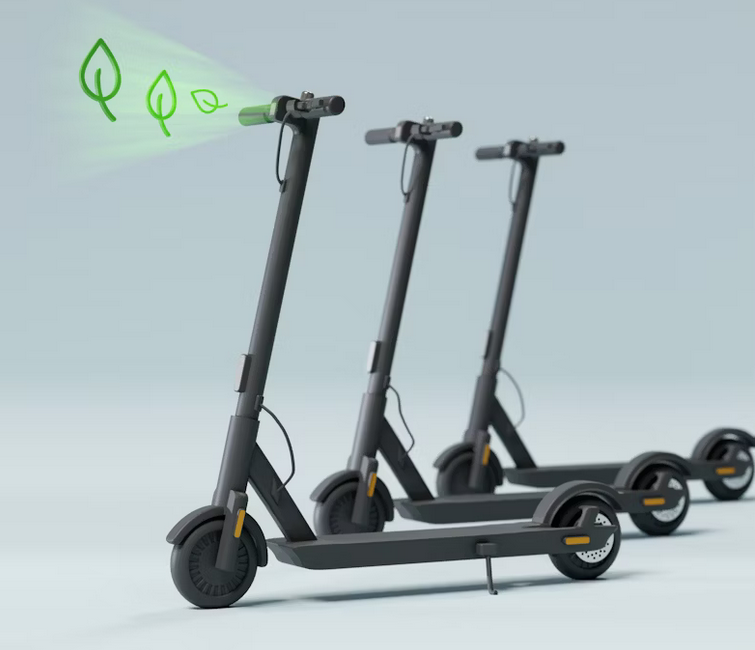The world of micromobility has been buzzing with excitement throughout 2025, with innovative trends and new technologies revolutionizing how we move through urban spaces. From cutting-edge electric scooters to AI-powered bike-sharing services, this year has seen incredible progress in making city travel more efficient, environmentally friendly, and fun. Let’s dive into the latest advancements that have taken the micromobility sector by storm.

Revolutionary Electric Scooters
Electric scooters have come a long way since their inception, and 2025 is no exception to their rapid evolution. One standout model is the Razor Vortex, which has delighted commuters with its enhanced battery life and sleek design. The Vortex boasts a range of up to 50 miles on a single charge, reducing the need for frequent stops to recharge and making longer commutes more feasible. Its lightweight frame and foldable design make it an ideal choice for urban dwellers facing limited storage space.
Another exciting development comes from Bird, a pioneer in the scooter-sharing industry, which has integrated solar-powered charging stations across several major cities. This environmentally conscious initiative not only reduces the carbon footprint of micromobility but also ensures scooters are always ready for the next ride.
AI-Enhanced Bike-Sharing Systems
In 2025, bike-sharing systems have embraced artificial intelligence to create more efficient and user-friendly experiences. Companies like Lime and Jump have implemented AI algorithms to predict peak demand times and strategically distribute bikes across cities. This predictive technology minimizes instances of bike shortages in high-demand areas and ensures more riders have access when they need it most.
Additionally, AI is being used to enhance the maintenance of bike fleets. Predictive maintenance algorithms analyze usage data and identify potential mechanical issues before they become problems, ensuring higher availability and safety for riders.

Integration with Public Transportation
One of the standout trends in 2025 is the seamless integration of micromobility options with public transportation systems. Cities like Amsterdam and San Francisco have implemented unified payment systems, allowing commuters to use a single app to pay for both public transit and micromobility services. This integration not only simplifies the commuting process but also encourages more people to leave their cars at home, reducing traffic congestion and emissions.
Furthermore, transit hubs now feature dedicated parking and charging stations for e-scooters and e-bikes, making it more convenient for users to transition between different modes of transportation. This cohesive approach highlights the importance of micromobility in creating a more connected urban transport network.
Innovative Safety Features
As micromobility continues to grow in popularity, safety remains a top priority for both manufacturers and city planners. In 2025, new safety features are being implemented to protect riders and pedestrians alike. The HelmetSense technology, for example, is gaining traction for its ability to detect a rider’s helmet status and limit speed accordingly. If a rider is not wearing a helmet, the scooter or bike will automatically reduce its maximum speed, promoting safer riding habits.
Moreover, advancements in geofencing technology have enabled cities to create virtual boundaries for micromobility devices. This ensures that scooters and bikes automatically decelerate or stop in restricted areas such as pedestrian zones or near schools, enhancing safety for all.
The Rise of Subscription Models
As the micromobility market matures, subscription models have emerged as a popular alternative to traditional pay-per-ride systems. Companies like Tier and Spin now offer monthly subscriptions that provide unlimited rides for a fixed price, appealing to frequent commuters. This shift not only offers cost savings for users but also generates more predictable revenue streams for service providers.
Subscription models often come bundled with additional perks, such as exclusive access to premium scooters with enhanced features like built-in navigation systems and weather-resistant designs. This added value is attracting a loyal customer base and driving further adoption of micromobility solutions.
With these exciting developments, 2025 is shaping up to be a transformative year for micromobility. As technology continues to advance and urban infrastructures evolve, we can expect even more innovative solutions to emerge, redefining how we navigate our cities. Whether you’re an avid e-scooter enthusiast or a newcomer to the world of micromobility, there’s never been a better time to embrace these forward-thinking transportation options. The future of urban travel is here, and it’s more accessible, sustainable, and thrilling than ever before.


